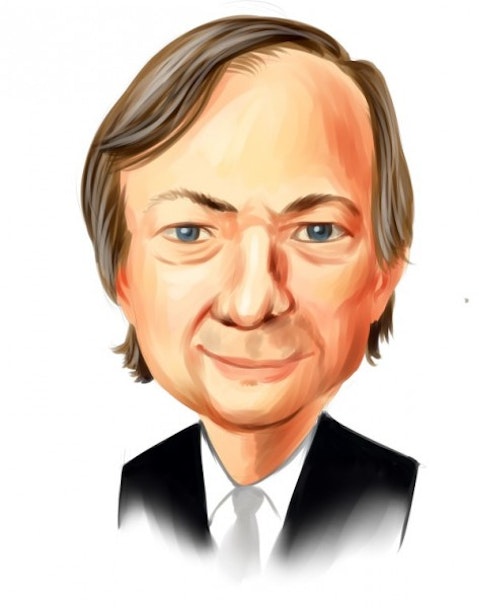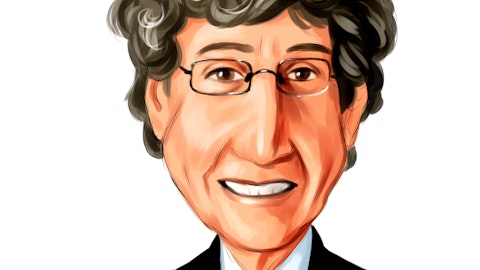Biggest hedge fund in the world: The entire hedge fund industry manages a little under $2 trillion in assets, and the largest of the bunch is Bridgewater Associates, which oversees more than $140 billion. Ray Dalio, a balanced investor who is famous for his principle-based top down approach to stock picking, is Bridgewater’s overlord. With a personal net worth near $13 billion, Dalio has become one of the biggest hedge fund billionaires out there, and the market-beating performance of these investors’ best stock picks is the primary reason why retail investors should pay attention.
Now, within Dalio and Bridgewater’s $11.4 billion equity portfolio, there are a variety of investment decisions at play. While many analyses on the blogosphere have endlessly analyzed how the firm is playing different macro trends, one simple question has not been answered until now: how does the biggest hedge fund in the world find dividends?
Among Dalio’s top 30 stock picks, just three offer dividend yields of at least 3%. Let’s run through this elite group.
Intel
Intel Corporation (NASDAQ:INTC) is the largest bet of this group, representing the 25th largest stake in Bridgewater’s equity portfolio. The chipset giant is held by a number of Dalio’s big-time peers like Ken Fisher and Jim Simons, and it offers a dividend yield of 3.9% at a moderate payout of about half its earnings. Since 2010, Intel’s dividend has grown by 40% and its payout ratio has fallen by close to 30 percentage points.
Positive long-term cash flow and earnings growth, in addition to a multiple of under 12 times forward EPS indicates that investors can snatch up Dalio’s favorite high-yield dividend stock on the cheap. More importantly, though, dividends appear sustainable over the next few years and actually offer the potential to grow.
CenturyLink
CenturyLink, Inc. (NYSE:CTL), meanwhile, is next on this group, and it also sits in the tech sector. Shares of the communications company have largely underperformed its peers in recent years, but they do offer a dividend yield in excess of 6%. Unlike Intel, CenturyLink gives a very different picture of income health; a payout ratio above 100% is a major red flag, as is the fact that dividends were cut by one-fourth in early 2013.
Dalio bought this stock in the first quarter of this year, potentially after it announced a $2 billion share buyback program, so it appears that he and Bridgewater are betting on a recovery in shareholder value relatively soon. Earnings have beaten Wall Street estimates in two consecutive quarters, so we’ll be watching CenturyLink’s next conference call in early November very closely. If you’re looking to mimic Dalio here on the basis of yield only, be wary that this stock’s current dividend payout is unsustainable over the long run, and will likely face another cut.
Microchip Technology
And the tech companies keep on coming. We’re beginning to notice a trend here. Microchip Technology Inc. (NASDAQ:MCHP) is Dalio’s third largest high-yield dividend holding, and he upped his stake by 200% in his last 13F filing. Like CenturyLink, this position was built in the first quarter, but unlike the aforementioned pick, shares have had a good 2013.
Microchip Technology has returned 24% year-to-date and its dividend yield of 3.5% is a handsome bonus. Interestingly, Microchip pays out over 200% of its earnings as dividends at the moment, and with modest but not mind-blowing earnings growth likely on the horizon, a cut may be in order. Still, even if Microchip’s yield falls below the 3% mark, a secularly bullish macro environment for the company’s microcontrollers should continue to provide a catalyst for further appreciation. Wall Street expects shares to have an upside near the $45 range; Microchip presently trades just above $40 a share.
A couple other names
Just outside of Dalio’s top 30 sits a couple other names with yields above 3%: Cenovus Energy Inc (TSE:CVE) and Maxim Integrated Products Inc. (NASDAQ:MXIM). Similar to some of the other companies on this list, both Cenovus and Maxim sport dividend payout ratios that are in “danger territory,” but future growth prospects look promising.
Each of these stocks also has their own macro thesis that justifies Dalio’s stake, from Cenovus’ ability capitalize off of Canadian oil sands and natural gas growth, to Maxim’s recent purchase of Volterra Semiconductor. The latter’s Volterra acquisition should expand its cloud computing business.
On the whole, it doesn’t appear that Ray Dalio and Bridgewater are too concerned about unsustainable dividend payouts. Rather, when selecting higher yield stocks, they choose to focus on names that have strong earnings momentum with further growth expected in the future, regardless of if a dividend cut might come to fruition. This is at the very least an interesting observation to consider, and we’d expect you to keep an eye on these positions in Dalio’s next 13F filing.
Disclosure: none
Recommended Reading:
How Does George Soros Invest? Here’s How He Plays The Stock Market






